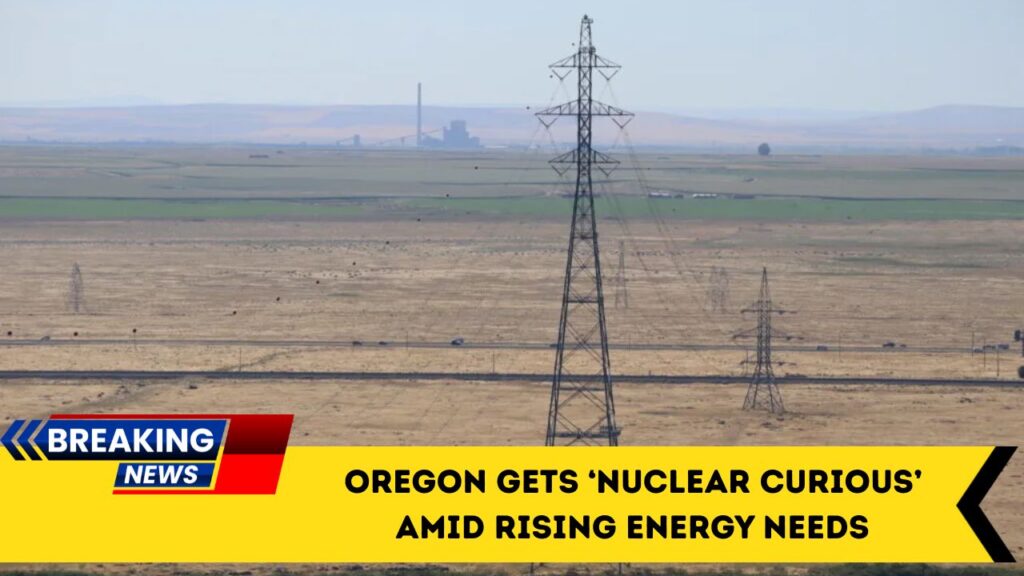In recent years, Oregon has seen a dramatic rise in electricity demand due to expansion in data centres, electrification of transport and buildings, and other growth-factors.
While many states rush into nuclear power, Oregon remains cautiously interested — or in other words, “nuclear curious”.
This article explores what’s driving that interest, what the barriers are, what the facts and figures say, and whether nuclear power might still be part of Oregon’s future energy mix.
Why Oregon is Looking at Nuclear Power
Oregon’s energy demand is growing. Between 2013 and 2023, electricity consumption in the state climbed nearly 20%, largely driven by data-centre expansion.
The state’s 25-year energy strategy highlights the challenge: while more renewables (wind, solar, wave) are planned, nuclear is mentioned only sparingly as something to study, not deploy immediately.
Oregon is “nuclear curious”: the state is interested in nuclear technology but remains cautious because of historical bans, high costs, long lead times, and waste disposal concerns.
These factors mean nuclear power is on the table — but not yet ready for prime time in Oregon.
Key Facts & Figures
Here are the key numbers and insights:
| Item | Detail / Figure |
|---|---|
| Increase in electricity demand | ~20% growth from 2013 to 2023 |
| Nuclear share of Oregon consumption | About 3% of the state’s electricity comes indirectly from a plant outside Oregon |
| Historic ban on new nuclear plants | A 1980 ballot measure bans new nuclear facilities in Oregon |
| Nuclear’s mention in policy | Identified only six times in a 150-page energy strategy document |
| Data-centre driver | Tech‐centre load growth especially in eastern Oregon |
What’s Holding Oregon Back?
1. Legal and Political Bans
Oregon’s ban on new nuclear plants has existed since the 1980 ballot measure. To allow new builds, voters would need to repeal that measure or approve exemptions.
2. High Costs & Long Timelines
Building a nuclear facility takes many years and billions of dollars. Permitting, safety reviews, licensing and waste management add even more complexity. Because of these long lead times, state officials say nuclear won’t solve near-term demand spikes.
3. Waste and Safety Concerns
Waste disposal remains unresolved; safe national disposal sites are still lacking. Public acceptance and safety regulation remain big hurdles.
4. Strong Alternatives
Oregon’s strategy emphasises faster and more cost-effective options: energy efficiency, building electrification, transmission upgrades, and renewables. As a result, nuclear is not front-and-centre — it is one of many options being considered.
How Nuclear Could Fit Into the Future
Even though Oregon isn’t embarking on immediate nuclear deployment, there are possible future scenarios:
- Use of Small Modular Reactors (SMRs) which promise lower upfront cost and faster build time.
- Strategic partnerships with tech companies or out-of-state plants to supply power.
- Repeal or modification of state laws to allow new nuclear builds under strict safety and regulatory frameworks.
If demand continues to increase — especially from data centres and electrification of everything — nuclear might become more attractive. But any nuclear path will be measured and long-term.
Oregon is at a pivotal moment: faced with rising energy demand and ambitious clean-energy goals, the state is cautiously exploring nuclear power as part of its long-term mix. The label “nuclear curious” captures the mood: interest without immediacy.
With legal bans, cost and safety obstacles in place, and strong renewable alternatives, nuclear may remain a studied possibility rather than an imminent build.
However, if power demand continues to surge, especially from data centres and electrified systems, nuclear could emerge as a serious contender.
For now, Oregon continues to prioritise efficiency, renewables and smart energy policy — with nuclear awaiting its turn.
